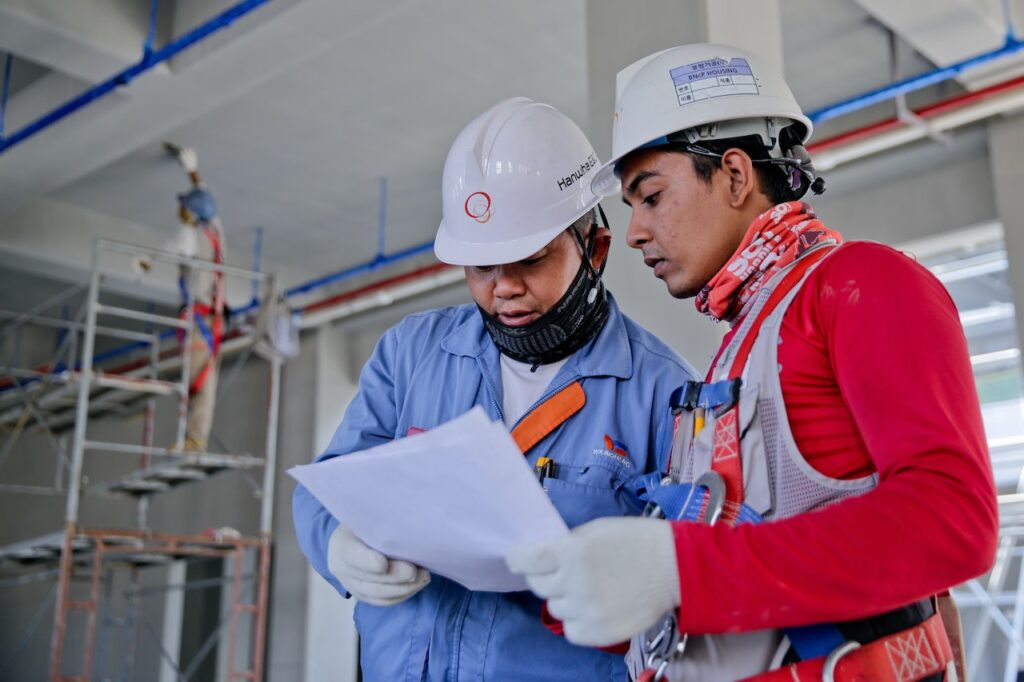Everything You Need to Know About Sustainable Construction

Sustainable construction is building energy-efficient structures, reducing environmental impacts, and minimizing resource consumption. It involves a comprehensive approach to designing and constructing durable, efficient, and cost-effective buildings. Sustainable construction practices also include using sustainable materials, such as recycled materials, renewable resources, and non-toxic materials.
Benefits of Sustainable Construction
Constructing sustainably offers tremendous benefits to property owners and the broader community, including:
1. Reduced Construction Waste
Sustainable construction benefits both the environment and the builders working on their projects. By embracing green building strategies, builders can significantly reduce construction waste that might otherwise end up in landfills or waterways. For example, a builder can achieve greater efficiency while conserving natural resources using recycled materials for interior and exterior finishes.
They can also use energy-saving heating and cooling systems, natural light sources, evaporative cooling systems, and other green building initiatives. In today’s increasing awareness of global warming and climate change, sustainable construction helps reduce waste and promotes ecologically friendly principles.
2. Energy Efficiency
Practices such as using recycled materials, natural ventilation, and timber treatment reduce strain on our planet’s resources while creating sustainable structures that are more resilient to extreme temperatures and disasters. In addition to helping save on emissions, merging sustainability into construction also leads to cost savings over time due to less maintenance needed over the life of the building. Ultimately, investing in sustainability pays off with healthy, efficient buildings that will outlast all others.
3. Improved Air Quality
Sustainable construction methods go beyond using recycled materials to incorporate practices that reduce energy usage, preserve natural resources, and protect our air quality. Green building practices, such as improved insulation, energy-efficient lighting, HVAC systems, natural ventilation, and strategically placed windows, directly affect air quality in buildings.
4. Reduce Pollution
Sustainable construction is important for any builder or developer looking to reduce their environmental footprint and minimize pollution. With the increased popularity of eco-friendly developments, builders and developers now have access to various resources that can help reduce their carbon footprint and protect the environment.
These resources include energy-efficient appliances, solar panels, low-flow plumbing fixtures, recycled building materials, insulation made from natural products, and green building certifications. Not only do these features result in lower energy bills and monthly expenses, but they also significantly reduce pollution generated by the development during its lifetime. Sustainable construction ensures that future generations can enjoy cleaner air, water, and land than we currently experience today.
Best Practices for Sustainable Construction
Employ several practices to ensure the successful implementation of sustainable construction projects. These include:
Research and Educate Yourself
It’s essential to research various available materials and technologies and their best practices to ensure that you are making the most sustainable and eco-friendly decisions. Furthermore, attending seminars, workshops, and online training can help increase your knowledge about sustainable construction.
Focus on the Design
Sustainable construction is an important architectural, engineering, and construction industry aspect. Design plays an integral role in creating efficient and cost-effective projects that are friendly to the environment. Architects, engineers, and contractors can create sustainable construction projects with lasting impact by focusing on design best practices, such as utilizing renewable materials.
Utilizing these design best practices can reduce the need for resources like water and electricity, making them more affordable and better for the environment. Focusing on design best practices ensures that your construction project stands out from competing designs while maintaining its environmental integrity.
Use Sustainable Materials
Use recycled materials, renewable resources, and non-toxic materials in your construction project to ensure its sustainability. For example, metal is more sustainable than wood because you can recycle and reuse it. However, ensure you collaborate with the best suppliers for these materials, as some may be unavailable. Going for online metals is advisable because you’ll read the reviews before purchasing. The beauty is that they come with warranties, and you don’t have to worry about product quality because customer service is excellent.
Create Sustainable Systems
Create energy-efficient systems and water conservation strategies to reduce resource consumption. It includes using renewable energy sources such as solar or wind power. Also, you can use techniques such as rainwater harvesting to reduce water consumption.
Incorporate Renewable Energy Sources
The construction industry is responsible for reducing its carbon footprint and protecting the environment. Incorporating renewable energy sources into construction projects is a best practice for sustainable construction and should be encouraged as much as possible.
Doing so can mitigate climate change, reduce pollution and energy costs, and create jobs in renewable energy-related fields. Construction professionals can work with experts in green technology to develop the best solutions that fit their needs.
Bottom Line
Sustainable construction is more than just using green materials and reducing waste; it involves utilizing innovative technologies and design best practices. All players can create eco-friendly construction projects with lasting impact by incorporating renewable energy sources and using sustainable materials. Besides, green building techniques and strategies can help reduce energy consumption, improve air and water quality, and preserve natural resources.



